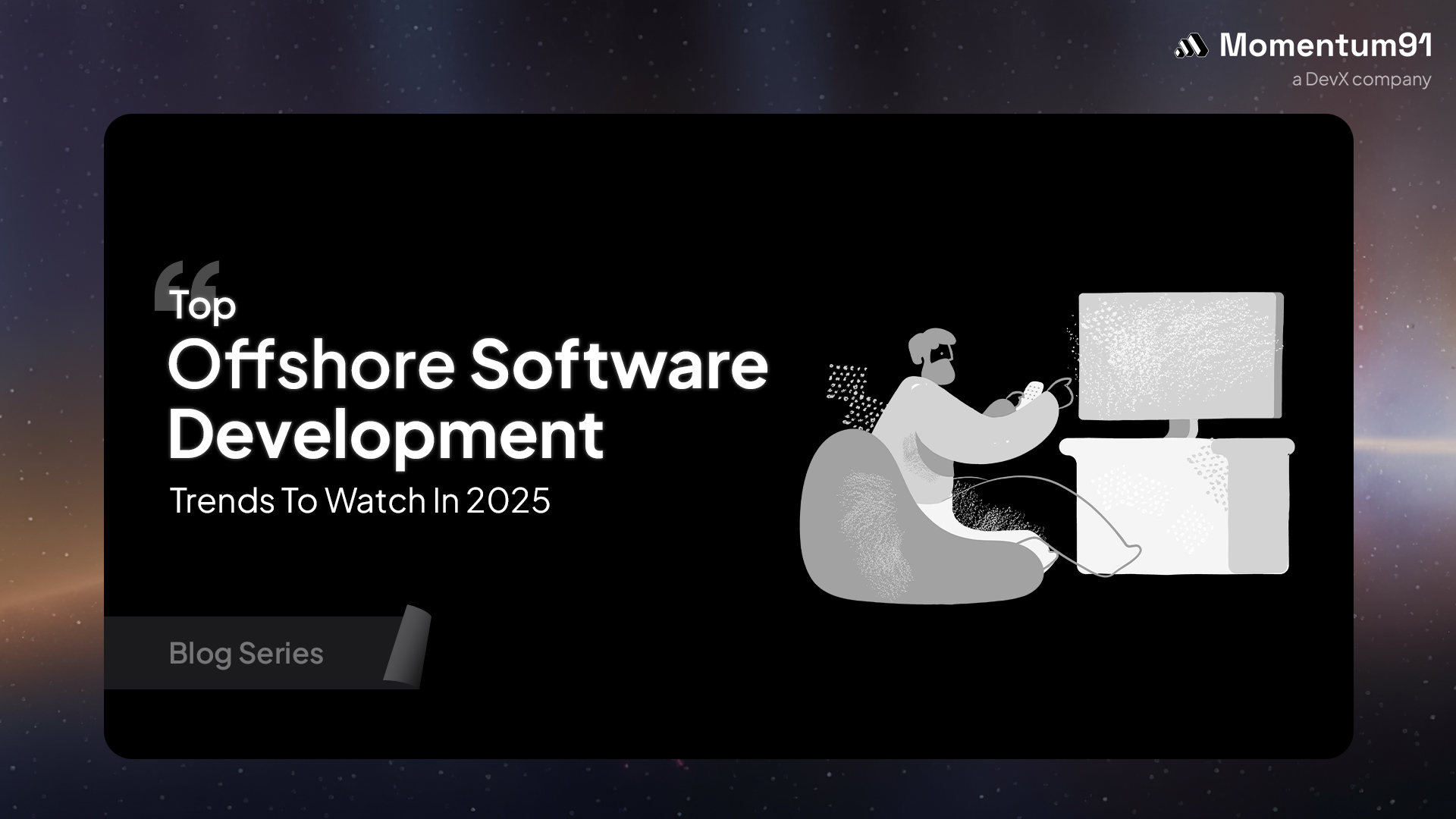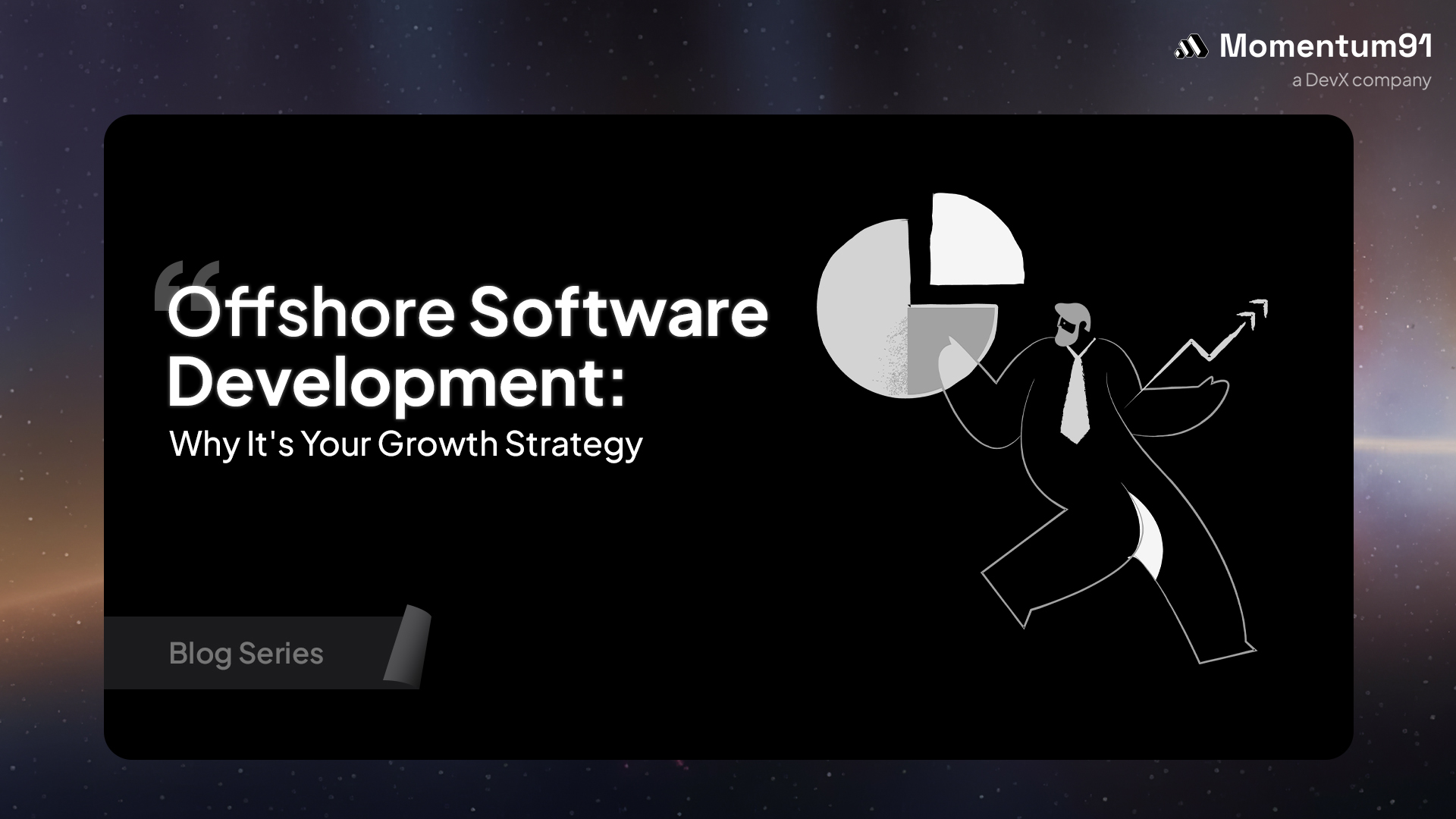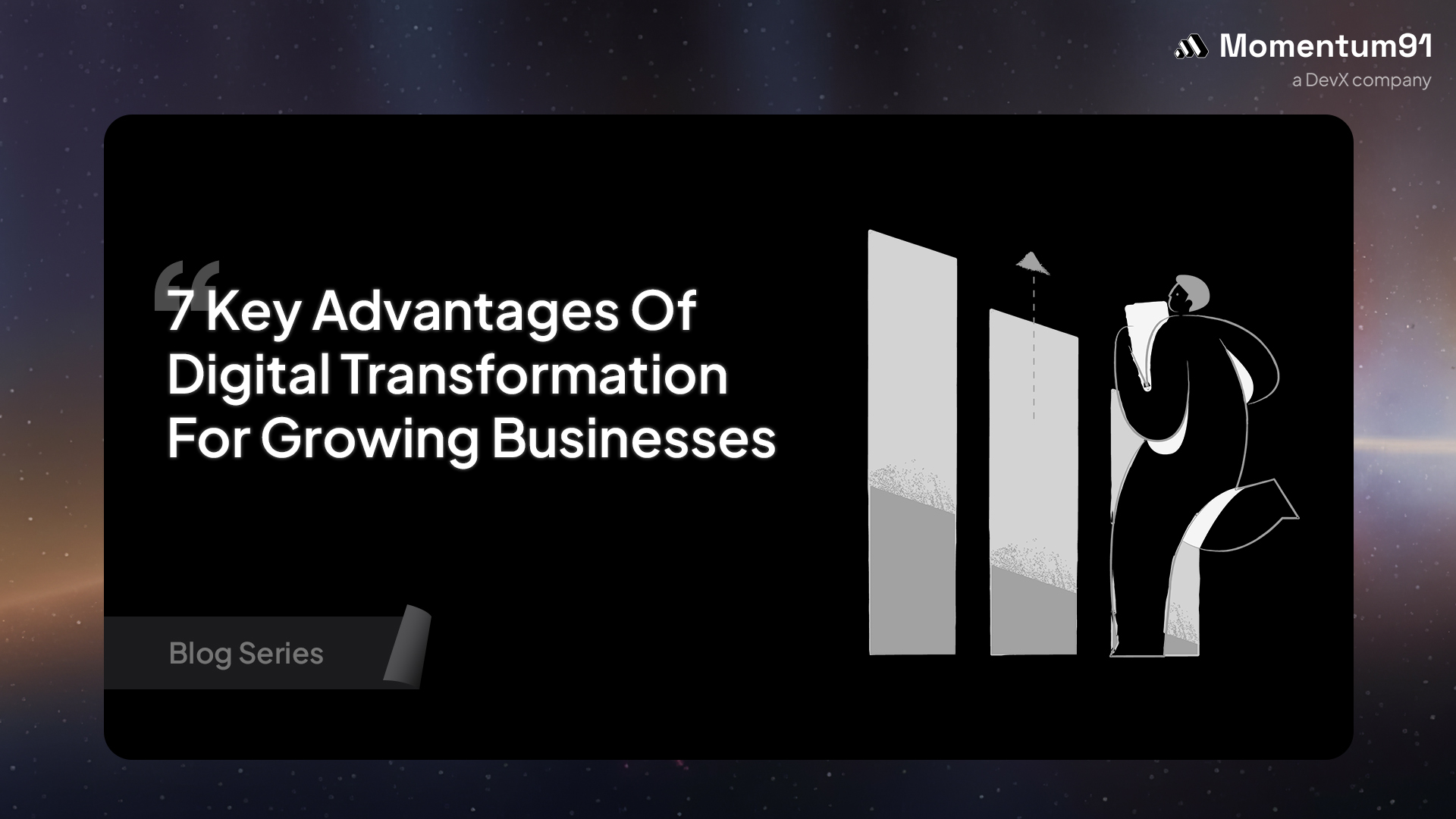What is Offshore Software Development? A Comprehensive Guide for Businesses
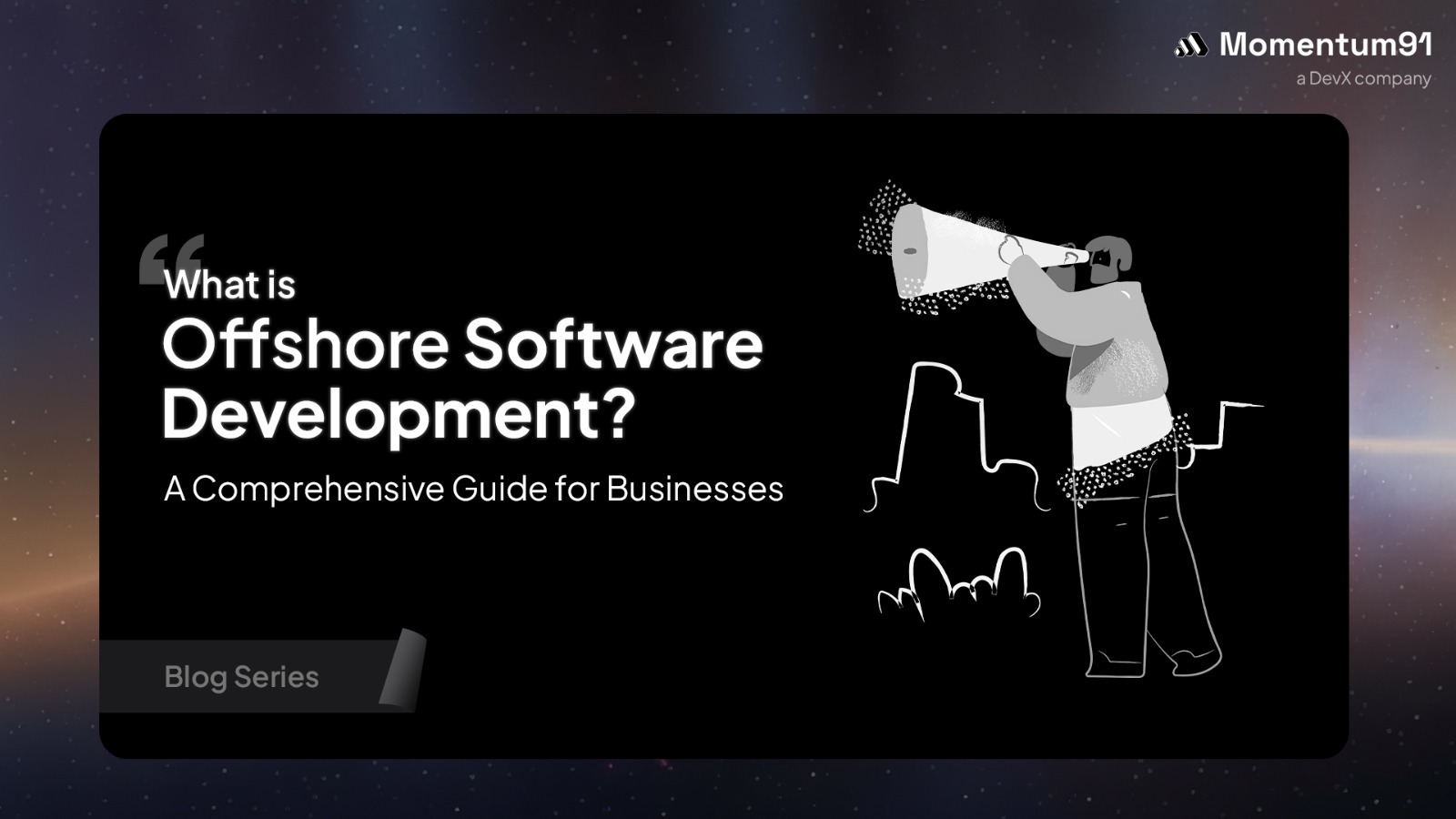
The global IT outsourcing market is projected to reach US $588.38 billion in 2025, and offshore software development has become a major driver of this growth. Businesses of every size from startups to global leaders like WhatsApp, Google, and Spotify rely on offshore partnerships to cut costs, access specialized talent, and speed up delivery.
By working with experienced teams outside their home country, companies reduce overhead while focusing on innovation. But asking what offshore software development means is more than just looking at expenses. It involves understanding reliable models, reducing risks, and selecting partners that deliver consistent value. This guide explores the essentials for those ready to embrace offshore opportunities in 2025
Breaking Down the Basics of Offshore Software Development
Understanding offshore software development helps businesses clarify how this approach differs from other outsourcing models. At its core, offshore software development means hiring a software team based in a distant country to build, manage, or support your applications.
Companies adopt this practice as part of broader software development outsourcing strategies, seeking cost advantages and access to skilled professionals worldwide.
A) What Makes Development "Offshore"
Development is considered offshore when a business partners with a vendor or team located in a different country. This setup typically offers reduced costs, scalability, and access to tech talent offshore, making it attractive for startups and enterprises alike.
B) Offshore vs Nearshore vs Onshore: Key Differences
- Onshore: Development takes place in the same country as the client, offering easy communication but higher expenses.
- Nearshore: Teams operate in nearby countries, often within overlapping time zones, delivering balanced offshore team advantages with fewer coordination challenges.
- Offshore: Teams work from distant locations such as India, Eastern Europe, or Southeast Asia, delivering strong cost savings and broad global software development expertise.
By understanding the basics and differences, businesses can now focus on the real value of exploring the strategic advantages of offshore software development.
The Strategic Advantages of Offshore Software Development
Companies exploring offshore software development quickly realize that the benefits go far beyond cost reduction. By partnering with offshore providers, businesses unlock opportunities for long-term growth and resilience.
A) Cost Savings That Go Beyond Labor
Choosing offshore partners can reduce expenses by almost 50 percent compared to in-house teams. These savings extend beyond salaries to recruitment, infrastructure, and operational overheads. In many cases, companies also avoid training costs since offshore vendors already have specialized staff ready to work.
B) Access to Global Talent Pools
Businesses can connect with engineers in India, Eastern Europe, or Southeast Asia, expanding their options for global software development. This approach gives companies an edge by securing rare expertise not easily found locally.
C) 24/7 Development Cycles
With distributed teams, businesses benefit from continuous progress. Work passes between time zones, allowing projects to move forward around the clock. These offshore team advantages shorten delivery times, accelerate innovation, and keep companies ahead of market demands.
These advantages set the stage for exploring the different offshore development models that businesses can adopt to match their unique project needs.
Top Offshore Development Models Every Business Should Know
When asking what offshore software development is, it’s important to understand the engagement models that guide collaboration. Each structure suits different goals, budgets, and timelines, so choosing the right one can define project success.
1. Dedicated Team Model
This model creates a long-term extension of your in-house staff. A dedicated offshore team works exclusively on your project, offering flexibility, direct communication, and alignment with your processes. It’s ideal for businesses with ongoing needs and evolving product roadmaps.
2. Project-Based Engagement
For companies with clearly defined requirements, the project-based model is a strong fit. It focuses on specific deliverables with fixed timelines and costs. This model is often used by businesses testing offshore partnerships before scaling.
3. Build-Operate-Transfer (BOT) Model
Here, a vendor builds and operates a development center, later transferring ownership to the client. It provides immediate access to infrastructure and offshore development models without the risks of building from scratch. Over time, full control shifts to the business, ensuring long-term independence.
Choosing the right model is only the first step, success also depends on addressing common offshore development challenges effectively.
Addressing Key Offshore Software Development Challenges
Understanding what offshore software development means recognizing that benefits come with challenges. Companies that address these issues early can ensure smoother collaboration and stronger results.
A) Communication and Time Zone Management
One of the most common offshore development challenges is coordinating across different time zones. Without overlapping hours and structured updates, teams risk delays. Using project management tools, setting clear expectations, and scheduling regular meetings can resolve most of these issues.
B) Security and Intellectual Property Protection
Working with offshore partners raises concerns about security and IP protection. Businesses must use non-disclosure agreements, secure code repositories, and compliance frameworks. Choosing a reliable offshore software development company reduces these risks significantly.
C) Quality Assurance Best Practices
Poor quality can impact project outcomes if processes aren’t consistent. Adopting offshore development best practices such as coding standards, automated testing, and routine code reviews ensures stability and long-term performance.
As businesses learn to manage these challenges, the next step is keeping pace with the latest offshore development trends shaping 2025.
2025 Offshore Development Trends Shaping the Industry
Companies exploring offshore software development must stay updated with trends shaping the industry. These shifts influence how businesses choose partners, manage projects, and compete in global markets.
A) Hybrid Offshore-Nearshore Models
More organizations are blending offshore cost benefits with nearshore collaboration. This hybrid model combines affordability with easier communication, reducing delays while maintaining efficiency. It reflects a maturing approach to offshore development models.
B) AI-Enhanced Development Processes
Vendors increasingly adopt AI for code reviews, automated testing, and resource allocation. These improvements streamline workflows, speed delivery, and support innovation across global software development projects.
C) Sustainability in Software Development
Clients are looking beyond price and delivery speed. Environmental responsibility is now a consideration when selecting an offshore software development company, with many vendors adopting greener practices and energy-efficient operations.
Recognizing these 2025 trends is valuable, but the real challenge lies in choosing the right offshore partner who can deliver lasting results.
How to Choose the Perfect Offshore Software Development Partner
Identifying the right partner is just as important as asking what offshore software development is in the first place. A poor choice can lead to delays, security risks, and added costs. A good partner ensures smooth collaboration and reliable results.
A) Essential Vetting Criteria
When evaluating an offshore software development company, look for:
- Proven track record with case studies or references.
- Transparent communication and project management processes.
- Ability to provide scalable dedicated offshore teams.
These criteria reveal whether the partner can deliver consistency and support your long-term vision.
B) Red Flags to Avoid
Be cautious if you encounter:
- Vague pricing or hidden costs.
- High developer turnover within the vendor team.
- Lack of clarity around security.
- Minimal visibility into daily progress.
Such red flags indicate poor structure and could create serious issues during delivery.
How Momentum91 Can Transform Your Offshore Development Success
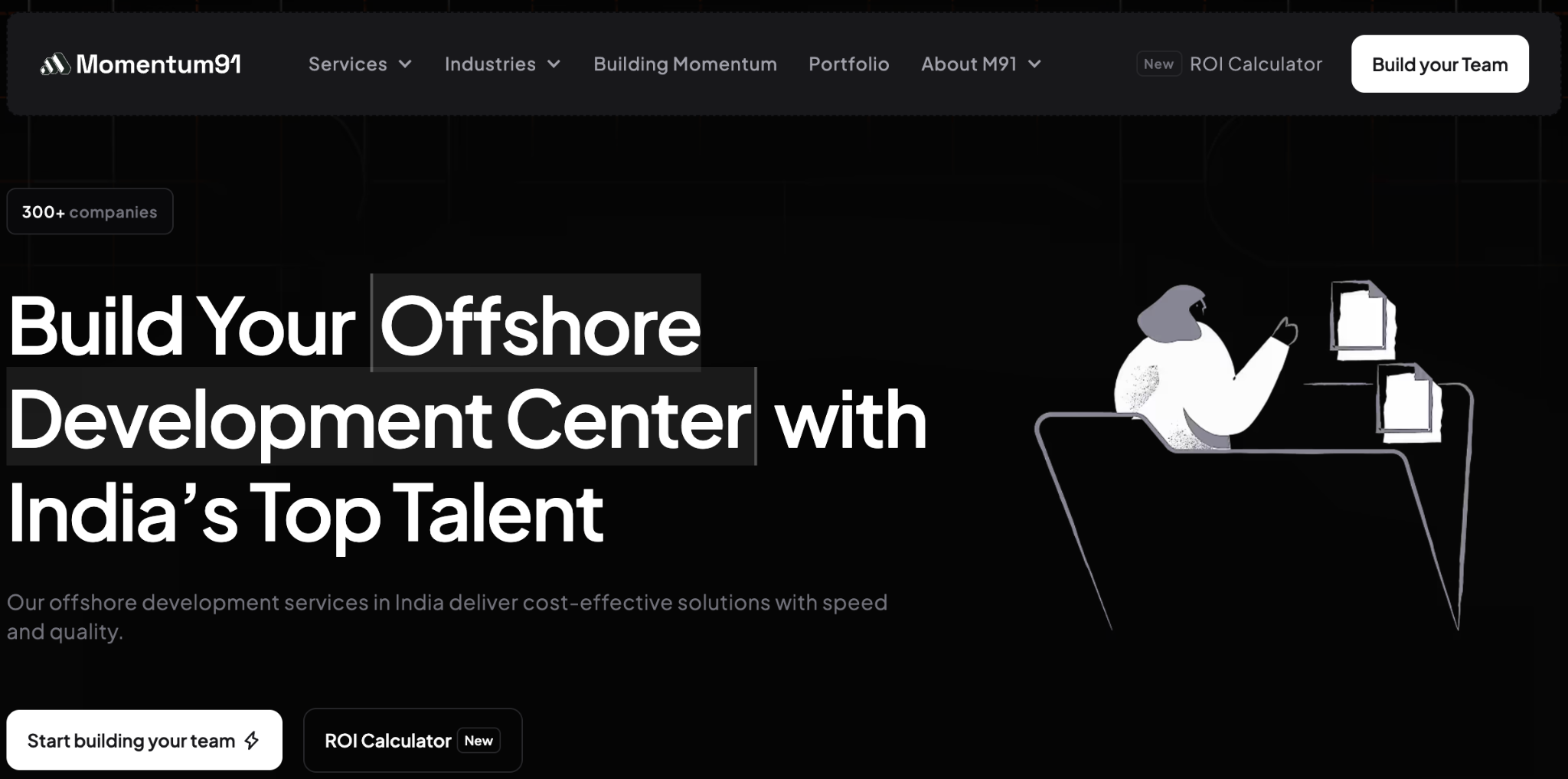
Momentum91 brings together deep AI, development, and design expertise to help you set up an offshore software development center quickly and efficiently. With 8 years of experience, a global infrastructure spanning 25 centers and 11 cities, and a talent pool of 13,000+ people, we deliver embedded, full-stack teams that feel like your own.
We move fast, with 95% of offshore software development teams going live in under ten weeks, and we cover everything from offshore software development PoC creation to software roll-outs and UX strategy.
Key Strengths
- AI-First Thinking: Innovation begins with thoughtful offshore software development integration.
- End-to-End Development: From concept to delivery, Momentum91 covers all phases of offshore development models.
- Full-Stack Execution: Engineers, designers, and product specialists all embedded in your global software development vision.
- Embedded Product Teams: Offshore dedicated teams work as if they’re onsite.
- Scalable Talent: Rapid team building powered by one of India’s most reliable partner networks.
Explore how Momentum91 transforms offshore software development ideas into impactful, scalable products and helps you move smarter, faster, and stronger.
Conclusion
Many businesses step into offshore software development without clear planning. The pain points usually involve poor partner selection, weak communication, and gaps in security. These mistakes lead to cost overruns, delayed launches, and compromised intellectual property, leaving companies frustrated and financially drained.
The products fail to reach the market on time, customer trust is lost, and internal teams face burnout while trying to manage offshore chaos. Competitors that collaborate with reliable offshore software development companies get ahead, while poorly managed projects fall behind.
Momentum91 transforms these outcomes through proven offshore development models and access to global software development talent. Our approach delivers cost efficiency while maintaining enterprise-grade quality. Companies achieve 3x faster deployment cycles, enhanced data protection, and flexible team scaling without fixed overhead costs.
Connect to Momentum91 today to build offshore software development teams that deliver growth and reliability from day one.
FAQs
Q1: What is the difference between offshore and outsourcing software development?
Outsourcing covers onshore, nearshore, and offshore models. Offshore software development specifically means hiring teams in distant countries to cut costs and access skilled professionals. Unlike nearshore or onshore, it demands stronger planning, strict communication, and trusted contracts. Reliable offshore software development companies bridge these gaps with proven methods and secure delivery.
Q2: How much can businesses save with offshore software development?
Partnering with an offshore software development company typically reduces costs by up to 50 percent compared to in-house teams. Beyond salaries, savings extend to infrastructure, recruitment, and training. By using dedicated offshore teams and following offshore development best practices, businesses also benefit from 24/7 cycles, efficient scaling, and faster delivery in global software development.
Q3: What are the biggest risks in offshore software development?
The key offshore development challenges include poor communication, weak data security, data breaches, IP theft, and inconsistent quality. These issues lead to project delays and financial losses. Selecting the right offshore software development company, enforcing contracts, and applying offshore development best practices like secure repositories and code audits reduce these risks significantly and ensure predictable results.
Q4: Which countries are best for offshore software development in 2025?
India leads with cost-effective tech talent offshore, while Eastern Europe offers strong technical expertise. Latin America provides time zone alignment for US clients, Southeast Asia emerges as a new hub, and South Africa grows for English proficiency. Each region supports global software development differently, enabling businesses to match project needs with skilled offshore partners.
Q5: How do you ensure quality in offshore software development projects?
Ensuring quality in offshore software development requires coding standards, automated testing, regular code reviews, and CI/CD pipelines. Clear reporting, overlapping work hours, and audits add accountability. Businesses that choose dependable offshore software development companies and embed dedicated offshore teams gain consistent results while aligning with offshore development best practices for long-term performance and stability.
Q6: What engagement model works best for first-time offshore development?
First-time clients often begin with a dedicated offshore team or pilot project to evaluate communication, collaboration, and cultural fit. This phased approach builds confidence before scaling. Over time, businesses can expand into larger offshore development models like project-based or BOT, supported by an experienced offshore software development company that ensures continuity and predictable success.
The inbox update you’ll never want to skip
A quick catch-up with ideas, wins, and tips worth stealing, straight to your inbox every week.
The easiest way to reach us.
Share your details and we’ll get back within 24 hours.
Blogs
A plethora of insights,all in one place
From strategy to execution. All the big ideas, practical guides & fresh perspectives that’ll help you scale with confidence
Ebooks
Comprehensive guides that break down the shifts in business and technology, Helping you lead with clarity.

Office Hours
Your direct line to our experts. Practical advice for scaling, right when you need it.

Reports
Data-backed perspectives on where industries are headed, giving you the foresight to make bolder moves.
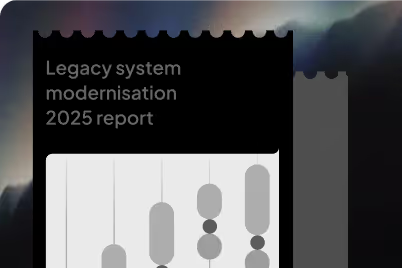
Newsletter
A quick catch-up with ideas, wins, and tips worth stealing, straight to your inbox every week.
.avif)
Podcasts
Conversations where you get to know everything from the ones who know it best.
.avif)
Your Offshore Development Center, Done Right
Access top-tier global talent, enterprise infrastructure, and complete regulatory compliance through our proven model.
Start Now





